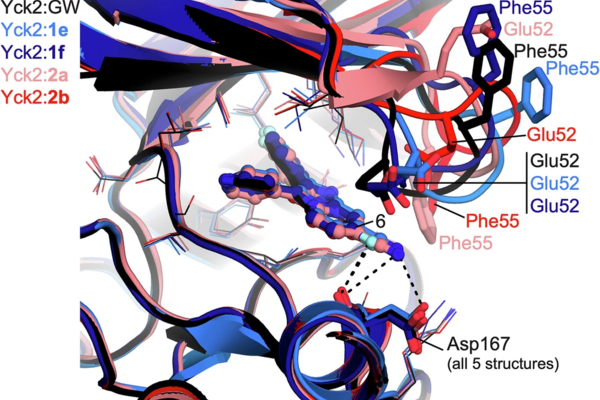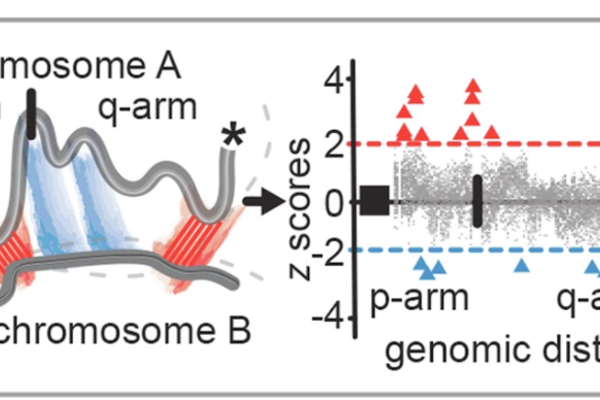Main Second Level Navigation
Breadcrumbs
- Home
- About
- News & Events
- News
- Human Microbiota Molecule Demonstrates Antifungal Properties
Human Microbiota Molecule Demonstrates Antifungal Properties

At this point, the public is aware that bacteria don’t play a purely negative role in our lives thanks to greater awareness of the human microbiota, which continues to reveal its critical role in human health. Factors such as diet, contraceptives, antibiotics, immune dysfunction, and diabetes have been shown to change the microbiota composition, which could dramatically influence susceptibility to infections. A significant example of this is the increased risk of vaginal yeast infection via Candida albicans (C. albicans) infection if there is reduced colonization by bacterial species from the Lactobacillus genus, which are commonplace in the human microbiota.
C. albicans is also part of our microbiota, and it primarily causes disease in individuals with altered or dysfunctional immunity. This can range from vaginal thrush or yeast infection to oral thrush to life-threatening severe infections with a 40% mortality rate, mainly due to limited antifungal options and increasing antifungal resistance akin to antibiotic resistance. In addition, biofilms in medical devices such as catheters make fungi an even more significant danger in healthcare settings as they are characteristically challenging to eradicate. This difficulty arises primarily from the ability of C. albicans to transition between its yeast and filament forms during infection, which allows for tissue adhesion and invasion and biofilm formation.
Fortunately, previous research has provided evidence that Lactobacillus species secrete molecules with antifungal properties, as they inhibited the growth of or killed C. albicans during in vitro experiments. This line of investigation advanced further in the latest publication from MoGen professor Dr. Leah Cowen’s lab. First author Jessie MacAlpine and other researchers showcased that Lactobacillus bacteria secrete a small molecule called 1-acetyl-beta-carboline (1-ABC), which blocks filamentation in the C. albicans fungus. It does this by inhibiting Yak1, a member of the dual-specificity tyrosine phosphorylation-regulated kinase (DYRK) family. These enzymes add phosphate groups to amino acid residues in proteins and get activated when they add a phosphate group to themselves.
The authors first found that media containing either live bacteria or just the medium in which the bacteria had been growing blocked filamentation of C. albicans. Afterwards, they purified and deduced the structure of the compound blocking the filamentation, which was determined to be 1-ABC. This study is the first report of Lactobacillus bacteria making the molecule. The team further confirmed that this was the bioactive compound by incubating the fungus with 1-ABC, obstructing filamentation. The authors also repressed the YAK1 expression, resulting in blocked filamentation, confirming its essential role in the fungal form change. Indeed, 1-ABC stopped filamentation when YAK1 expression was reduced but was less effective when YAK1 was overexpressed. They also incubated 1-ABC with other Candida species, which blocked filamentation, and confirmed Yak1 as essential for multiple Candida fungal species to change between yeast and filament forms.
Subsequently, through sequencing the genomes of mutant fungi resistant to the effects of 1-ABC, the team found that said resistance was due to mutations in the OCA6 gene, which codes for an enzyme that removes phosphate groups, and the ROB1 gene, which codes for a transcription factor involved in the filament transition. Additionally, while most beta-carboline molecules, including 1-ABC, unfortunately, were degraded when incubated with human liver-derived cells, the team identified a structural analogue of 1-ABC called 1-ECBC that also blocked filamentation by inhibiting Yak1. Moreover, this compound significantly diminished fungal adherence and biofilm formation on serum-coated plastic, medical catheters, and mouse vaginal tissue without causing tissue damage.
In summary, this publication reveals that certain Lactobacillus species found in the human microbiota produce the beta-carboline 1-ABC, which suppresses C. albicans filamentation and biofilm formation, potentially reducing the fungus’ ability to cause disease and making molecular derivatives of 1-ABC promising drug candidates. This research also opens the door for further studies into the medical applications of other molecules generated by microbial species and provides routes for future antimicrobial research. It also confirms the critical role of our microbiota in our health, as the source of said compounds resides within us. This relationship adds a new dimension to the disease-fighting mechanisms at work within us because we see bacteria helping us against infection rather than causing it. Lastly, this research unveils the complex interactions between different kingdoms of microorganisms, whether they be fungi or bacteria. It demonstrates how we might leverage this knowledge to treat and prevent fungal infections in the future.
Image credit: Jessie MacAlpine
Read the full article here: MacAlpine, J., Daniel-Ivad, M., Liu, Z. et al. A small molecule produced by Lactobacillus species blocks Candida albicans filamentation by inhibiting a DYRK1-family kinase. Nat Commun 12, 6151 (2021).


